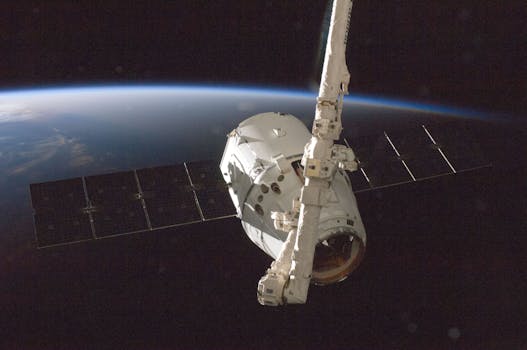LEO Satellites: Revolutionizing Global Connectivity with WordPress

LEO Satellites: Revolutionizing Global Connectivity with WordPress
LEO satellites, or Low Earth Orbit satellites, are a type of satellite that orbits the Earth at an altitude of around 160 to 2,000 kilometers. These satellites have been gaining popularity in recent years due to their ability to provide fast, reliable, and widespread internet coverage. With the rise of WordPress, users can now create and manage their own satellite-related content, further expanding the reach of LEO satellites.
One of the main advantages of LEO satellites is their low latency. Because they are closer to the Earth’s surface than traditional geostationary satellites, they can provide faster data transfer rates and lower latency. This makes them ideal for applications that require real-time communication, such as video conferencing, online gaming, and virtual reality. Additionally, LEO satellites can provide coverage to remote and underserved areas, where traditional internet infrastructure is lacking.
How LEO Satellites Work
LEO satellites work by using a network of satellites in low Earth orbit to provide internet coverage. Each satellite is equipped with a transponder that receives and transmits data to and from Earth. The satellites are connected to a network of ground stations, which are responsible for managing the flow of data and connecting users to the internet. The satellites use a variety of frequencies, including Ka-band, Ku-band, and C-band, to transmit data.
One of the key technologies used in LEO satellites is phased array antennas. These antennas use a large number of small antennas to steer and shape the beam of radio waves, allowing for more precise and efficient communication. Additionally, LEO satellites use advanced propulsion systems, such as ion engines, to maintain their orbit and adjust their position as needed.
WordPress and LEO Satellites
WordPress is a popular content management system (CMS) that allows users to create and manage their own websites and blogs. With the rise of LEO satellites, WordPress users can now create and manage their own satellite-related content, such as blogs, news sites, and e-commerce platforms. This can be particularly useful for organizations and individuals who need to communicate with remote or underserved areas.
There are several WordPress plugins and themes available that are specifically designed for LEO satellite applications. These plugins and themes provide features such as satellite imagery, mapping tools, and connectivity solutions. Additionally, WordPress users can use a variety of widgets and shortcodes to integrate LEO satellite data and maps into their websites and blogs.
Future of LEO Satellites
The future of LEO satellites looks bright, with many companies and organizations investing heavily in the technology. One of the most exciting developments is the launch of large constellations of LEO satellites, such as SpaceX’s Starlink and Amazon’s Kuiper Systems. These constellations will provide global internet coverage, with thousands of satellites working together to provide fast and reliable connectivity.
Another area of development is the use of LEO satellites for Earth observation and remote sensing. These satellites can provide high-resolution imagery and data on the environment, climate, and natural resources. This can be used for a variety of applications, such as monitoring deforestation, tracking ocean health, and predicting weather patterns.
In conclusion, LEO satellites are revolutionizing the way we connect to the internet, and with WordPress, users can create and manage their own satellite-related content. The future of LEO satellites looks bright, with many exciting developments on the horizon. As the technology continues to evolve, we can expect to see even more innovative applications and use cases for LEO satellites.

